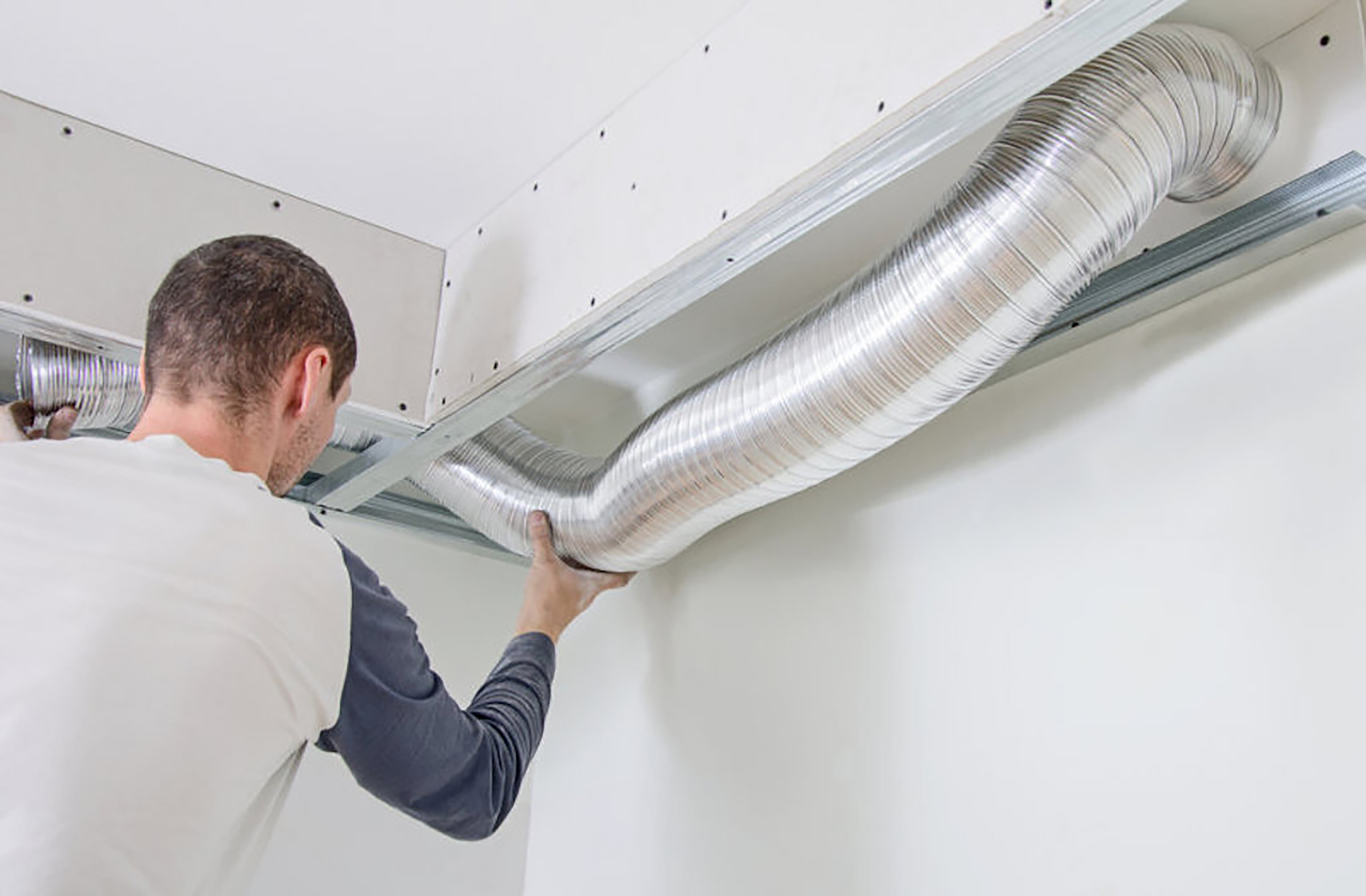Ductwork is one of the most important components of an HVAC system, but it’s also one of the most overlooked. Many people don’t realize how important proper insulation for ductwork can be when it comes to keeping their home comfortable and energy-efficient. In this blog post, we’ll take a look at some common types of insulation for ductwork and discuss why it’s so important to choose the right type for your needs. We’ll also highlight some of the benefits of insulating your ducts. So if you’re looking for ways to improve your HVAC system, be sure to read on!
The Types of Insulation for Ductwork
- Fiberglass Insulation with Aluminium Foil
The fiberglass insulation material for HVAC ducts has been around since the 1920’s and is still one of, if not the, most popular choice today. Fiberglass insulations have a layer of shiny aluminum foil on the outer surface to hold the fiberglass material together. This type of Insulation for ductwork provides superior thermal efficiency because it can conduct heat away from your home quicker than other materials such as asphalt or brick pavers which take much longer to lose their warmth once heated up inside a building. Fiberglassing transforms preserved air into clean fresh lungs with no harmful emissions while also reducing allergies when compared side by side against an un-insulated system.
- Cross-Linked Polyethylene Insulation Foam
The use of polyethylene (PE) insulation for ductwork to insulate air conditioning ducts and exhaust ventilation is more common than fiberglass. PE foams are expensive, so they’re usually only used for exposed parts like the outside covering or fan blades on your home’s heating/cooling system. Fiberglassing works well in concealed locations because it has less ability to resist compression from other materials around them. Polyethylene (PE) is often used to insulate air conditioning ducts as well as exhaust ventilation ducts. PE insulations are more preferred to be used when the duct is exposed. PE insulations are more expensive than fiberglass insulations and thus, concealed ducts are usually not insulated with PE foam.
- Rockwool Insulation with Perforated Metal Sheet
Soundproofing is an important component when it comes to maintaining the integrity of your home’s HVAC system. Rockwool or stone wool, both common sound insulation materials found on air conditioning ducts inside homes for this purpose can help absorb unwanted noise by muffling tone through its smooth surface that lacks friction points – ensuring quieter environments where people may actually be able to sleep better at night! Averagely, internal insulations stretch about 20 ft (6 m) and 4 ft (1.2 m) from the supply air outlet of AHUs and FCUs respectively.
Economic benefits of insulation for ductwork
If you’re like most people, you probably don’t think about your home’s ductwork all that often. But if you want to keep your energy bills low, it’s important to make sure that your ducts are properly insulated. Insulation can help keep your home cool in the summer and warm in the winter, leading to significant savings on your energy bill. Though the initial cost of adding insulation may seem high, the benefits in terms of energy efficiency and utility bills can be significant.
Insulation & Comfort!
Did you know that the amount of insulation in your home can make a big difference in your comfort? If you have too little insulation, your home will be drafty and uncomfortable. Conversely, if you have too much insulation, it can create problems with moisture and heat retention. The quality of insulation and its correct type are really important factors before finalizing to insulate your home. A proper insulation for ductwork at your place will allow you to live hassle free and without worrying about the all important ductwork. Insulation also helps in maintaining the temperature according to the conditions which adds on to the comfortness of the user.
Contact Airlogix.
If you are in the market for insulation of ductwork, there are a few different types to choose from. The most popular type is fiberglass. There are also spray foam and cellulose options that offer similar benefits in terms of thermal insulation and noise reduction. Once you’ve decided on the right type of insulation, it’s important to ensure that it is properly installed to get the most out of your investment. For more information about how to install insulation for ductwork in your home or office, please contact us today!

Bethany Elfaham spearheads AirLogix, a company distinguished for its advanced commercial HVAC/R services. Bethany’s leadership and expertise in mechanical systems have propelled AirLogix to the forefront of HVAC innovations, offering energy-efficient and reliable solutions to businesses. Her focus on sustainable practices and customer-centric service ensures that AirLogix remains a leader in enhancing indoor air quality and operational efficiency for its clients.
